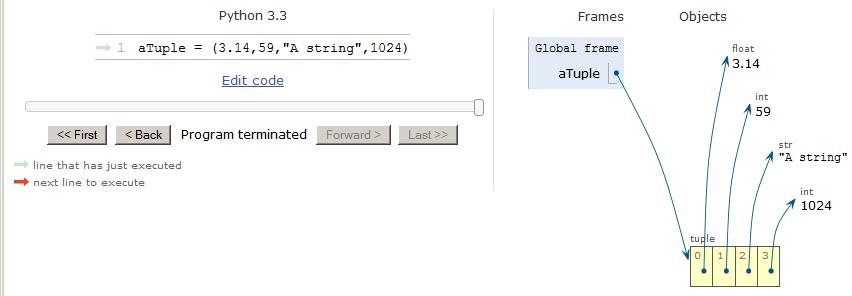| << Chapter < Page | Chapter >> Page > |
This module is one in a collection of modules on Python designed for teaching ITSE 1359 Introduction to Scripting Languages: Python at Austin Community College in Austin, TX.
I recommend that you open another copy of this module in a separate browser window and use the following links to easily find and view the Figures and the Listingswhile you are reading about them.
(Note to blind and visually impaired students: most of the Figures and all of the Listings in this module are presented in plain text format and should be accessible using anaudio screen reader or a braille display.)
Previous modules have introduced you to lists, subscriptions, sequences, mutable sequences, mappings, slicings, and have mentioned tuples.
Those modules showed you some of the ways that you can manipulate lists. The discussion was illustrated using sample programs.
The introduction to tuples in previous modules was very brief. This and several future modules will use sample programs to show you a variety of waysto manipulate and use tuples.
As a practical matter, a tuple is like a list whose values cannot be modified. In other words, a tuple is immutable .
According to Lutz and Ascher, Learning Python from O'Reilly, tuples are "Ordered collections of arbitrary objects."
Again according to Lutz and Ascher, "They work exactly like lists, except that tuples can't be changed in place (they're immutable)..."
Unlike lists, however, tuples don't use square brackets for containment. Rather, they are normally written as a sequence of items contained inparentheses.
Like a string or a list, a tuple is a sequence . Like a string (but unlike a list) , a tuple is an immutable sequence.
Tuples can contain other compound objects, including lists, dictionaries, and other tuples. Hence, tuples can be nested.
One way to think of a tuple is to consider it to be an array of references to other objects.
For example, Figure 1 shows a visualization of the tuple from Listing 6 . As you can see, each element in the tuple object at the bottom right contains a reference or apointer to another object.
Figure 1. Visualization of a tuple.

While the tuple itself cannot be changed in place, the values contained in the objects that are referred to by the contents of the tuple can be changed (assuming that those objects are mutable) .

Notification Switch
Would you like to follow the 'Itse 1359 introduction to scripting languages: python' conversation and receive update notifications?